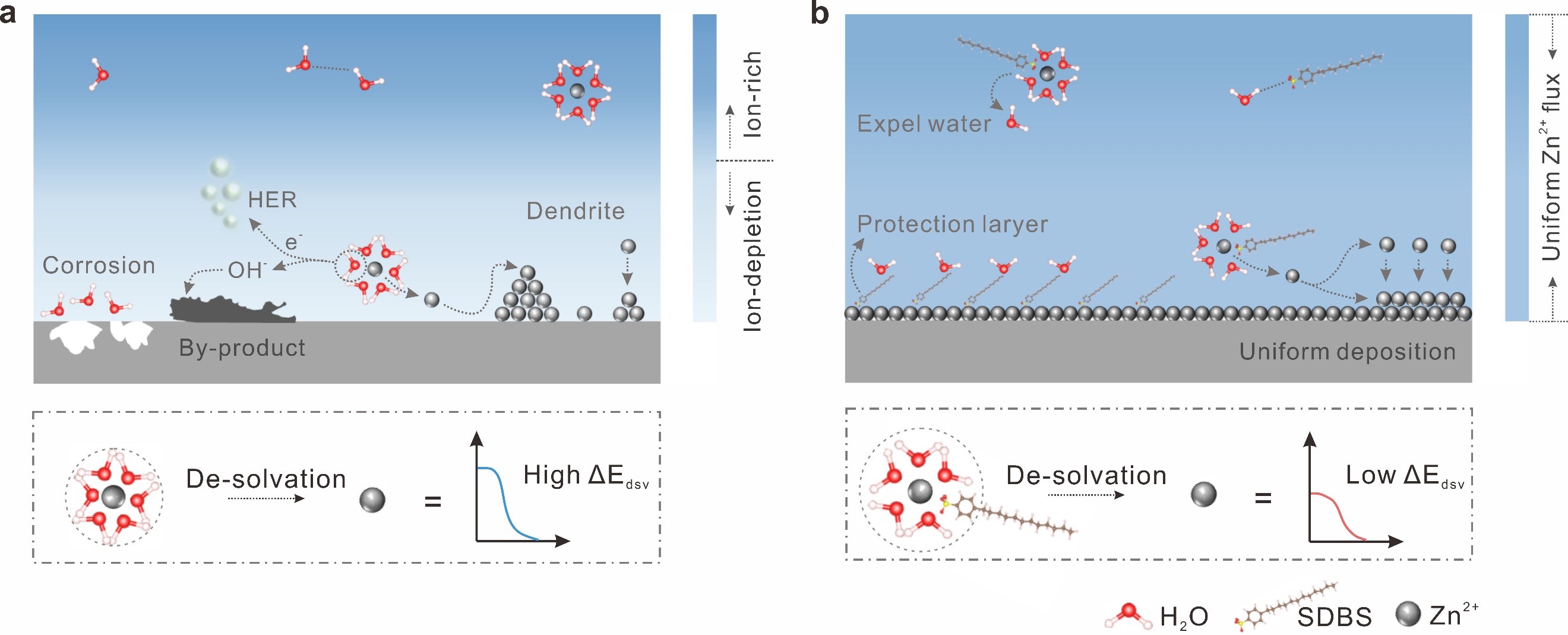
According to research published in Energy Storage Materials recently, a team led by Prof. HU Linhua from Hefei Institutes of Physical Science of Chinese Academy of Sciences proposed a general principle through evaluating the highest occupied molecular orbital (HOMO) energy level of molecules and employed it as a critical descriptor to select non-sacrificial anionic surfactant electrolyte additives for stabilizing Zn anodes, realizing sustainable regulation effect with inhibited Zn dendrite growth and side-reactions.
"That means the anionic surfactant electrolyte additive sodium dodecyl benzene sulfonate (SDBS) with high HOMO energy level can stop harmful zinc dendrites from growing and make the batteries better at being recharged and reused," said Dr. LI ZHAO Qian, member of the team.
Aqueous zinc-ion batteries (AZIBs) have nowadays stimulated widespread attention for their safety, reliability, and cost-effectiveness. The severe Zn dendrite growth and severe side-reactions have become the major roadblock to the widespread commercialization of AZIBs. Anionic surfactants, as a category of typical non-sacrificial additives, have a long history of application in metallurgy as corrosion-inhibiting and deestering agents for Zn plating. Therefore, choosing a suitable anionic surfactant additive promises to fundamentally obtain highly stable and reversible metal anodes.
In this study, researchers proposed and demonstrated a general descriptor by evaluating HOMO energy level to select non-sacrificial surfactant additives of electrolyte for stabilizing Zn anodes. Three typical anionic surfactants molecules including SDBS, sodium dodecyl sulfonate (SDS), and sodium p-ethylbenzene sulfonate (SEBS) with non-sacrificial behaviors and different HOMO energy levels are chosen as additives, and the influence of HOMO energy levels on coordination and adsorption effects are investigated for the first time. Experimental and calculational results demonstrate that SDBS with the highest HOMO energy level exhibits the strongest coordination and adsorption effects, which extremely improves the stability and reversibility of Zn anode.
"The battery worked for over 3200 hours in the test, even at high power levels, which is 30 times longer than with the original electrolyte," explained Dr. LI Zhaoqian.
They also tested the battery with different materials and found that it worked well with them, even after many cycles. They assembled Zn//Cu batteries with average Coulomb efficiency of 98.15% after 800 cycles. Meanwhile, the Zn//NH4V4O10 full battery delivers a long-term stability with capacity retention of 93.5% after 8000 cycles.
This research provided a promising strategy for screening optimal electrolyte additives for high performance AZIBs, and was expected to be applied to other metal batteries, according to the team.

Figure 1. Schematic diagrams for Zn deposition in ZnSO4 (a) and SDBS/ZnSO4 (b) electrolytes. (Image by LI Zhaoqian)